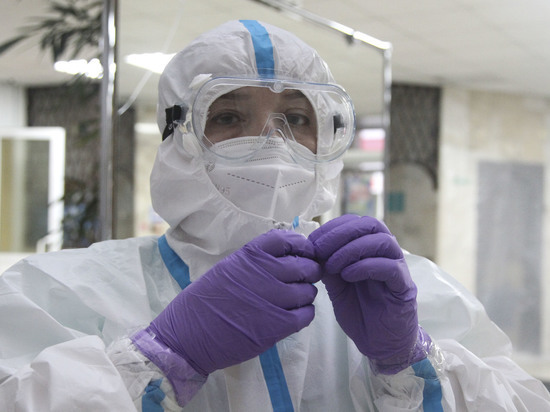Influenza, or COVID-19: which virus began to kill children in Russia
[ad_1]

In recent days, the media now and then report cases of fatal SARS in children aged from one to 14 years. Most often, the symptoms do not cause concern, but after 2-3 days the child suddenly develops pneumonia and other various complications, and he dies. Such cases are reported from Moscow, St. Petersburg, Chita, Barnaul, etc. Is it a new dangerous virus affecting children or just a coincidence? MK understood this.
Over the past week, two strange cases of SARS in children with fatal outcomes have been reported in the capital. Thus, a second-grade student died of pneumonia with severe complications on the fourth day after the onset of symptoms of SARS. On January 24, he developed a high fever. The next day the doctor came, who did not suspect anything terrible and left the boy at home. But the child did not get better. According to their parents, they called an ambulance several times, but received recommendations only to drink antipyretics. On January 28, the boy was taken to the intensive care unit, unconscious. The media report that he was diagnosed with bilateral pneumonia, sepsis, purulent damage to the bone marrow, cardiovascular and liver failure … He died just half an hour later.
A few days later, a similar story, only with a one-year-old baby, happened in Maryino. The child died after being treated for SARS at home by a doctor, and just a day before his death, he was examined by a pediatrician. And although the doctor suggested an acute respiratory tract infection, he did not find any reason for hospitalization – he prescribed antiviral drugs. The main version of death is called pneumonia.
The next incident recently occurred in St. Petersburg. A 14-year-old teenager began to complain of ARVI symptoms. There was nothing unusual in his condition – fever, cough, runny nose. But the next day he died.
And about a month ago, in the northern capital, a sudden death from pneumonia was recorded in an infant – he was only 1.5 months old. The baby did not even have symptoms of SARS.
A tragic childhood death was also recorded in Volchikha (this is not far from Barnaul). First, on January 27, a seven-year-old boy had a sore throat, then a temperature rose. The parents turned to the pediatrician, who prescribed symptomatic remedies. But at home, the boy’s temperature rose again, he began to breathe heavily. An ambulance was called, but in the hospital where he was brought, the child stopped breathing, and it was not possible to save him.
A one-year-old girl in Chita also died from complications of SARS. She was taken to the hospital with signs of an infectious disease. The exact cause of death has not been established.
Is there a possibility that a dangerous childhood virus has come to Russia, which is complicated by rapid pneumonia? MK asked about this Associate Professor of the Department of Pediatric Infectious Diseases, PF RNIMU named after N.I. N.I. Pirogov Ivan Konovalov.
– Each case needs an individual assessment. It happens that viral infections lead to secondary depletion of immune function and are accompanied by the addition or activation of bacterial or fungal infections that can cause multiple organ failure. Such stories are not unique, although they are not so common in pediatrics.
It should also be taken into account that some infections are not accompanied by a pronounced change in well-being in the early stages. There is even the concept of “toxic scissors symptom” – this means a discrepancy between the patient’s well-being and the degree of damage to his body. This happens, for example, with COVID-19 – it seems that a person feels well, but according to CT, he has a massive lesion of the lung tissue. In chlamydial pneumonia, auscultation with a stethoscope may not be accompanied by wheezing or weakening of breathing, while radiographically common lesions of the lungs are detected.
With influenza, there are frequent secondary complications, for example, pneumococcal infection, it can cause various purulent lesions – from otitis media to meningitis in childhood. In addition, it should be borne in mind that not all children who did not have a burdened history – that is, a recorded chronic or congenital pathology, are completely healthy. For example, a number of congenital immunodeficiencies are found in children older than two or three years of age when they receive viral and bacterial pathogens in groups. In such patients, any infections may occur atypically, more severely and suddenly.
– That is, it cannot be said that some new virus has come, for example, a new variant of SARS-CoV2 or influenza, which causes such a severe course of infection in children?
– It is necessary to understand that COVID-19, the flu, and other infections are individual for everyone. Infectious disease is only one, although the most important, of the variants of the infectious process. There are both asymptomatic and atypical (erased, mitigated) course. At the same time, a disease is always an individual interaction of a macro- and microorganism, and its course depends both on the characteristics of the pathogen, the dose of the infectious agent received, the ways of its transmission, and on the state of the organism of the infected person. And it’s not just about immunity – failure can be at the level of the cardiovascular, endocrine, neurological, urinary, and any other systems and organs.
[ad_2]
Source link








